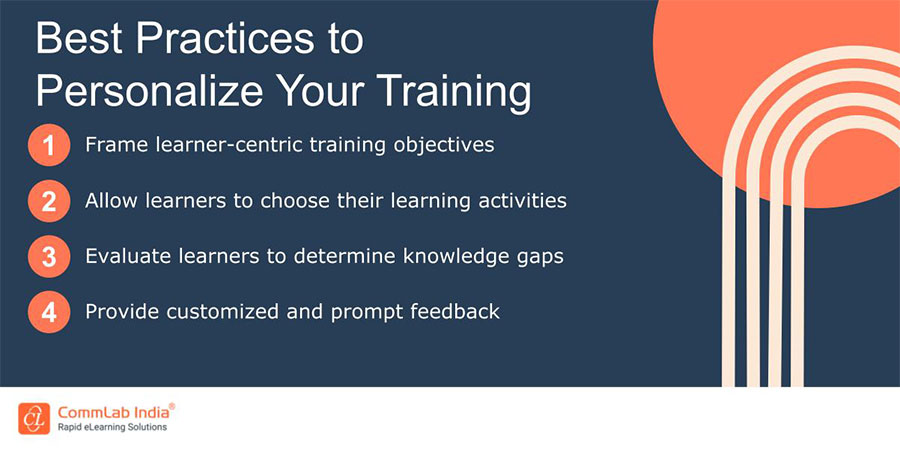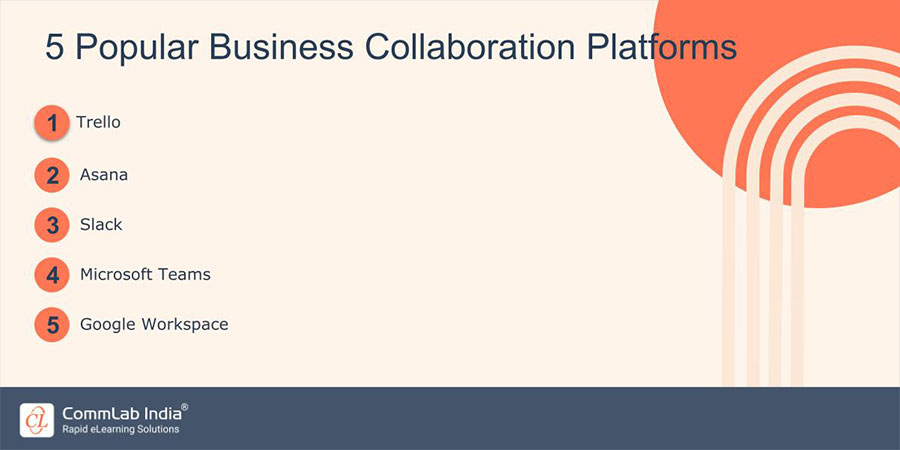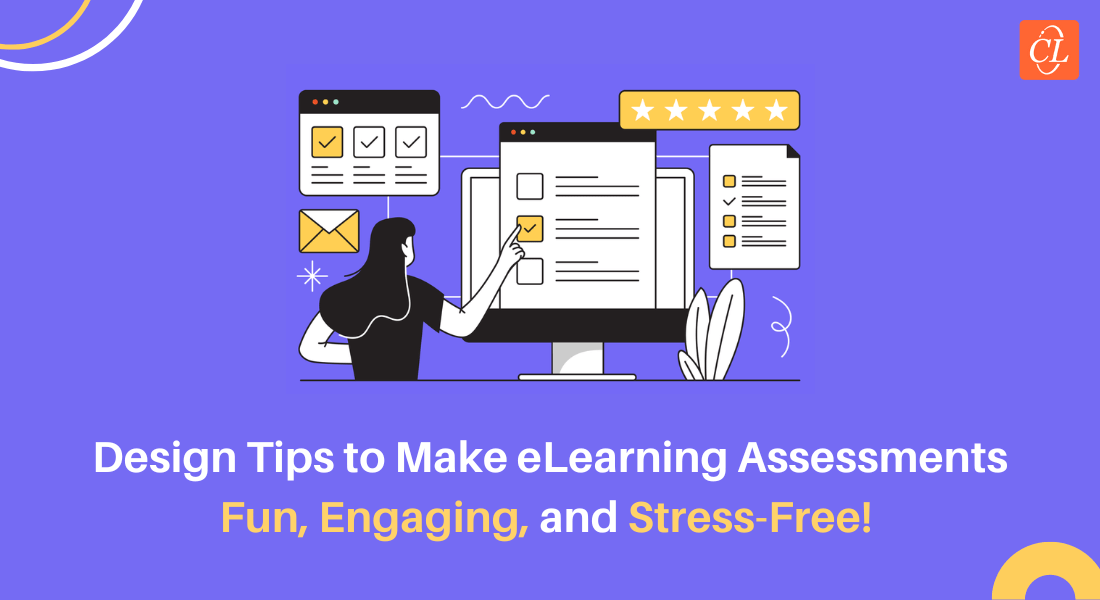How to Craft eLearning Assessments that Inspire Real Change
This blog post calls upon trainers and instructional designers to embrace innovation in eLearning assessment design and implementation.

The training landscape has undergone a significant transformation with the rise of eLearning platforms. Traditional educational models often prioritize the transmission of knowledge over the development of practical skills and competencies. However, contemporary eLearning approaches are increasingly emphasizing the importance of fostering tangible learning outcomes. Assessments play a crucial role in driving learning outcomes by providing learners with opportunities to demonstrate their understanding, skills, and abilities. This blog will help you learn how to craft eLearning assessments that can inspire real change.
Trying to Craft eLearning Assessments That Can Inspire Real Change?
Here are a few things you need to do -
- Understanding learning-centric assessment design
- Embracing gamification and immersive experiences
- Harnessing data and AI for adaptive assessments
- Cultivating collaborative assessment practices
- Designing assessments for real-world applications
Learners are now assessed based on their ability to demonstrate specific skills and competencies, rather than mere memorization of facts and information. Well-designed eLearning assessments not only measure learning progress but also serve as motivational tools. They inspire learners to engage deeply with course content, pursue mastery, and ultimately catalyze transformative change in their knowledge, attitudes, and behaviors.
How to Craft eLearning Assessments that Inspire Real Change
1. Understanding Learner-Centric Assessment Design
Personalized assessment strategies recognize that learners have unique preferences, strengths, and learning styles. Adaptive learning and assessment technologies leverage learner data to dynamically adjust the difficulty and format of assessment tasks based on individual learner needs and progress. By tailoring assessments to match learners' cognitive abilities and interests, trainers can enhance motivation, minimize frustration, and optimize learning outcomes. Here are a few best practices to personalize your training.

Engaging assessments resonate with learners' interests, passions, and real-world experiences, fostering a sense of relevance and intrinsic motivation. Integrating authentic assessment tasks that reflect learners' personal or professional goals encourages deeper engagement and promotes transferable skills development. Soliciting learner feedback and preferences allows trainers to co-design assessments that reflect the diverse needs and perspectives of their learners, enhancing overall satisfaction and effectiveness.
Effective assessment design acknowledges the diverse range of learning styles, preferences, and accessibility requirements present among learners. Offering multiple assessment formats and modalities accommodates different learning styles, including visual, auditory, kinesthetic, and tactile learners. Incorporating universal design principles ensures that assessments are accessible and equitable for all learners, regardless of their backgrounds, abilities, or learning challenges.
→ Download eBook Now: Storytelling and AI
2. Embracing Gamification and Immersive Experiences
- Gamified Assessment Environments
Gamification involves incorporating game elements and mechanics into non-game contexts, such as eLearning assessments, to enhance engagement and motivation. By integrating elements like points, badges, leaderboards, and challenges into assessment activities, trainers can create a more interactive and enjoyable learning experience. Gamified assessment environments provide learners with clear goals, immediate feedback, and a sense of progression, thereby increasing their motivation to participate and perform well.
- Virtual Reality (VR) and Augmented Reality (AR) Simulations
Virtual reality (VR) and augmented reality (AR) technologies offer immersive and interactive custom eLearning experiences that simulate real-world environments and scenarios. These technologies enable learners to engage with content in a more experiential and hands-on manner, facilitating deeper understanding and retention of knowledge. By incorporating VR and AR simulations into assessments, trainers can provide learners with opportunities to apply their skills in realistic contexts, fostering practical problem-solving abilities and critical thinking skills.
- Engaging Storytelling Techniques
Storytelling is a powerful tool for engaging learners and contextualizing learning content within compelling narratives. By weaving stories into assessment scenarios, trainers can create a sense of immersion and emotional connection that enhances learner engagement and motivation. Story-driven assessments present learners with meaningful challenges and dilemmas, prompting them to apply their knowledge and skills to solve problems and make decisions within the narrative context. This approach not only makes assessments more enjoyable but also helps learners connect abstract concepts to real-world situations, facilitating deeper learning and understanding.
3. Harnessing Data and AI for Adaptive Assessments
Data analytics tools allow trainers to gather valuable insights into learner behavior, preferences, and performance patterns. By analyzing data generated during assessment activities, trainers can identify trends, strengths, and areas for improvement among learners. These insights enable trainers to personalize learning experiences, tailor instruction to individual learner needs, and provide targeted support and intervention when necessary.
Adaptive assessment algorithms use data-driven insights to dynamically adjust the difficulty and content of assessment tasks based on individual learner performance. These algorithms ensure that assessments remain challenging yet achievable for each learner, maximizing engagement and learning outcomes. Adaptive assessments adapt in real-time to learners' responses, providing them with personalized feedback and support to help them succeed.
Artificial intelligence (AI) technologies can analyze assessment data to provide learners with personalized feedback, recommendations, and remediation strategies. AI-powered feedback systems use natural language processing and machine learning algorithms to assess learner responses, identify misconceptions, and offer targeted guidance for improvement. By providing timely and relevant feedback, AI-powered systems support learner self-assessment, reflection, and mastery of key concepts and skills.
4. Cultivating Collaborative Assessment Practices
- Peer Assessment and Feedback Mechanisms
Peer assessment involves learners evaluating and providing feedback on each other's work, promoting collaboration, critical thinking, and communication skills. By engaging in peer assessment activities, learners gain valuable insights into alternative perspectives, approaches, and solutions. Peer feedback encourages active participation and accountability while fostering a supportive learning community where learners can learn from and support each other's growth.
- Collaborative Problem-Solving Tasks
Collaborative problem-solving tasks require learners to work together to analyze complex problems, generate solutions, and make decisions as a team. These tasks promote collaboration, communication, and teamwork skills, which are essential in today's interconnected and dynamic work environments. By engaging in collaborative problem-solving assessments, learners develop not only subject-specific knowledge and skills but also transferable skills that are highly valued in the workplace.
- Social Learning Platforms for Shared Learning Experiences
Social learning platforms enable learners to engage in shared learning experiences, collaborate with peers, and access a wide range of learning resources and support services. These platforms facilitate communication, collaboration, and knowledge sharing among learners, regardless of geographical location or time constraints. By participating in social learning communities, learners can connect with like-minded individuals, exchange ideas, and collaborate on projects and assignments, enhancing their learning experience and outcomes. Here are a few collaboration platforms to facilitate social learning.

5. Designing Assessments for Real-World Application
Project-based assessments require learners to apply their knowledge and skills to real-world tasks or challenges. These assessments simulate authentic work scenarios and encourage learners to demonstrate their problem-solving abilities, creativity, and innovation. By engaging in project-based assessments, learners develop practical skills and competencies that are directly applicable to their personal, academic, or professional pursuits.
Case studies and simulations provide learners with opportunities to analyze and solve complex problems within realistic contexts. These assessment methods present learners with authentic scenarios, dilemmas, and challenges drawn from real-world situations. By engaging in case-based assessments, learners develop critical thinking skills, decision-making abilities, and domain-specific expertise that are essential for success in their chosen field or discipline.
Assessments that incorporate industry tools and applications enable learners to gain hands-on experience with relevant software, technologies, and processes used in their field of study or profession. By working with industry-standard tools and applications, learners develop practical skills and competencies that are directly transferable to the workplace. These assessments bridge the gap between theory and practice, preparing learners for success in their future careers or endeavors.
Wrapping Up!
In conclusion, modern eLearning assessments have the transformative potential to enhance learning outcomes, engagement, and motivation among learners. By leveraging innovative assessment approaches, trainers can create meaningful learning experiences that inspire learners to apply their knowledge, skills, and abilities in real-world contexts. As we discussed earlier about AI and its applications, here’s an eBook that will help you understand more about it.





